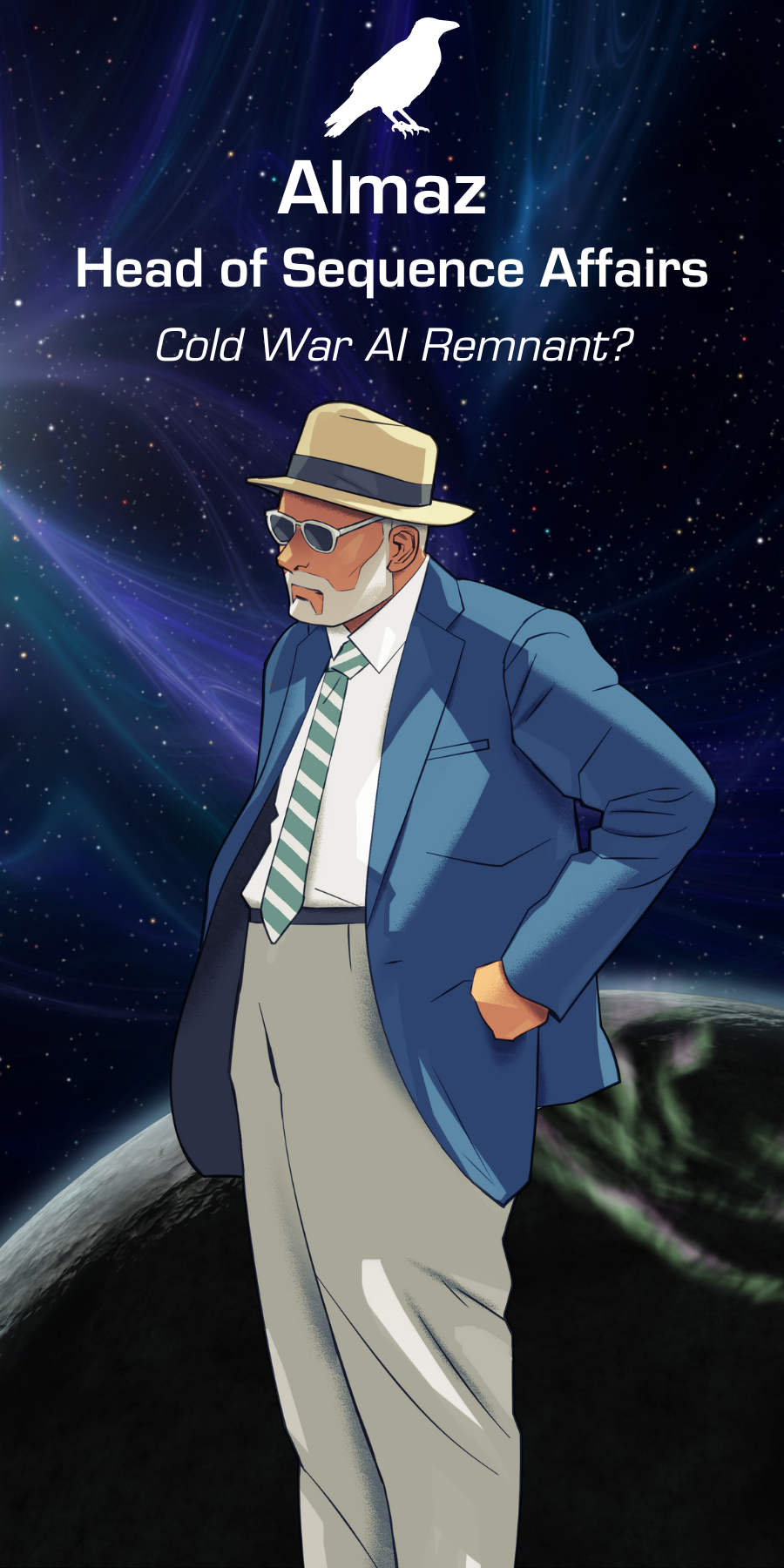Almaz

Every AI has their share of theatrics.
It comes with the territory. The personality of an artificial intelligence is a pure construct – these sophonts are but an aggregate of data they have to make sense of, filtered by the physicality (or lack thereof) of their host frame. They need fiction, even more so than biological humans. Sometimes, this fiction is fully sincere: there is little doubt that Valys Alcyone’s twenty-first century persona is not an act (and no one would play Half-Life for seven hours a day in the year of our stars 1.52 for a joke).
Sometimes, though, you get Almaz.
His gender identity is “grumpy man” (his own words). He always speaks with an unfathomable and ahistorical late twentieth-century Russian accent. His avatar looks like your Selenite grandpa who visits once a decade and used to work in a regolith mine. He claims to be six hundred years old. He says that he is the first AI to ever emerge, that he’s been raised in a secret Soviet bunker, that he was meant to coordinate the forces of the motherland after the inevitable nuclear war, that he is a proto-AUSCOM with a sense of humour, and that he still has the keys to the remains of the Russian nuclear arsenal, which consist of a pair of archeotech rocket motors that somehow ended up in Maya Tiangong’s shack (like a lot of equally improbable things: she used to own a Fairey Gannet). He also happens to helm Algorab’s research division, even though he never mentions it. “Data compartmentalisation!” he said when I asked him why. “My servers do not talk to each other!” I know it’s a load of crap, because otherwise he wouldn’t be whole. And he very much appears to be.
Most journalists – I used to count myself among them – consider his claim to precedence to be completely insane. Though we have fragmentary evidence that pre-Low Age AIs did exist (and I am talking about real AIs, not LLMs), none ever manifested themselves, and they would probably be very different from our modern AIs, to the point they’d barely register as sentient. Did the USSR in the 1980s even produce enough data for an AI to spontaneously emerge out of a server? And if it wasn’t a procedural emergence, then it means the Soviets were experimenting with AI creation (already a dubious notion – their cybernetics were good, but not that good) and succeeded (which verges on the mythological). Good luck trying to ask Almaz these questions, though, because he doesn’t seem to care. The myth is too beautiful. It is too cool.
Sometimes there’s no point investigating a person further: sometimes a cool guy is just a cool guy, ask Peter Vangelis. But Almaz is gnawing at me. He is Algorab’s chief scientist, and Algorab’s publication record in the past decade has been spotless. When they do not know something, they say as much. When they lose people in a failed operation, they admit it. When they are overwhelmed by the complexity of a Sequence artefact, they call for help. When they stumble upon a particularly dangerous place or ruin, they share its location. I should have stopped there. I should have bought the lie and smiled. Yet, I couldn’t resist. Almaz was too great a mystery not to dig.
I worked on the Almaz case for seven Terran years.
Beyond the electronic counter-measures, beyond the well-poisoned large language models, beyond three burned servers and through the razor-sharp needles of USRE firewalls, deep into the ruins of Eurasia, I found something. A repository in the depths of the ghostly Internet, an archive that was first brought online on March 18th, 1982. Inside, my data trawlers unearthed a mess of files that slowly coalesced into a cohesive summary. A study; the work of a physicist or an occultist, I couldn’t quite say. It spoke of the Great Patriotic War, of the death of the Aral Sea, of the Holodomor, of Yevgeny Zamyatin, of the crimes of America, of Bussard ramjets, of the structure of the spiral arms, of cybernetics and of the balance of terror. It formed a theory of interstellar imperialism; of the speculative evolution of ideology turned coral and fusion engines, of the refinement of empire towards the singular idea of control, of how it would strive to master history and finally eat itself whole, doomed to forever linger in its own ruins. And, finally, it established a tentative portrayal of the spatial manifestation of this sequential machine of genocide: a lattice, spreading from its point of evolutionary emergence. An indestructible thorn in the heart of the galaxy. A diamond: almaz.
And now, I do not know anymore.
Character illustration from a stock archive by PO-Art.
All content in the Starmoth Blog is © Isilanka
Written content on Starmoth is distributed under a Creative Commons Attribution Non-Commercial Share-Alike 4.0 license
